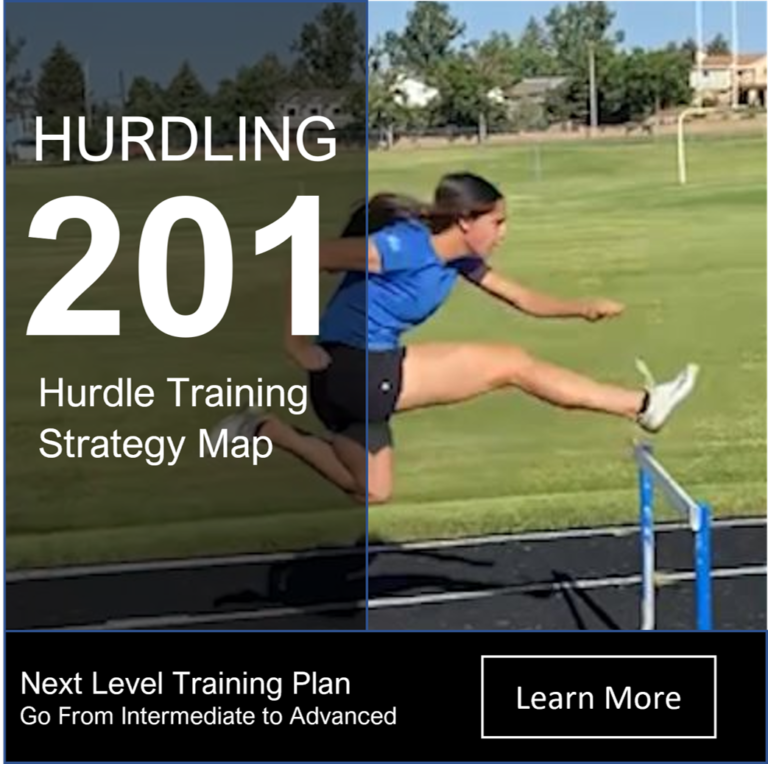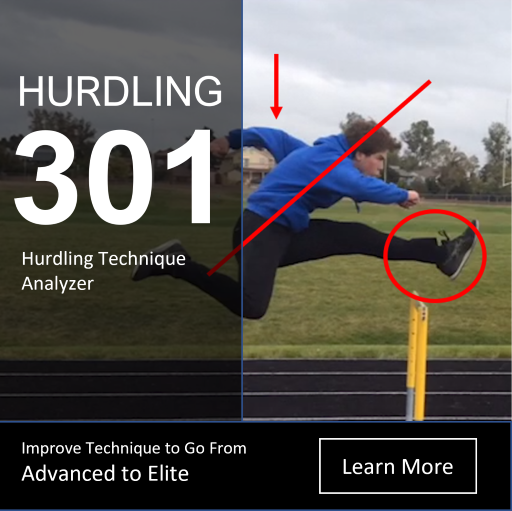
About the 100 Meter Hurdles
The 100 meter hurdles is a sprint race for females. The men’s version of that race is the 110 meter hurdles. There are 10 hurdles in the race. The distance to first hurdle is 13.0 meters and the hurdles are spaces 8.50 meters apart. Hurdle height varies based on age groups and various league rules, but once women reach high school age, the height is a standard 33 inches.
100 Meter Hurdles Strategy
Obviously, the goal is to be the faster competitor over the 10 hurdles and to the finish line. The best strategy is to get to the first hurdle in 8 steps and then to take 3 steps between each hurdle. Here’s a breakdown.
8 Steps to First Hurdle
If possible, take 8 steps to the first hurdle. (Virtually)All the best hurdlers do this. This means that you know which leg you prefer to lead with and have that leg be the back leg at the starting line. The only time you should deviate from this is if you have short legs that prohibit you from taking only 8 and you must take more. Another reason is if your speed is not sufficient to allow you to take only 8 steps. In rare situations, some athletes with long and fast legs can get away with only 7 steps. I only recommend this if it can be proven to be a faster approach. Just because an athlete can do it doesn’t mean that it is faster.
This video demonstrates the various steps between hurdles
3 Steps Between Each Hurdle
As mentioned above, the fastest way to hurdle is to take 3 steps between each hurdle and clear the hurdle on your 4th step. This allows the athlete to get into a rhythm and always lead with their favorite leg.
Note: This assumes that those steps are normal, fast strides. If, in order to reach the next hurdle in 3 steps, you resort to slow, stretched out strides, you are actually making a mistake by taking 3 steps. This type of running is slower and will never allow reaching a good speed and clearing the hurdles quickly. In this case, you should likely switch to 4 steps between the hurdles.
4 Steps Between Each Hurdle
This is best for the athlete that cannot reach the hurdles in 3 steps. It allows you to run with a more normal, faster stride. The challenge with this approach is that it forces the athlete to alternate legs over each hurdle. This can be a tough to do and makes it harder for the hurdler to establish a rhythm. It does, though, have the advantage of perfecting both legs for the hurdler which can come in handy if they run the 300 or 400 meter hurdles race.
5 Steps Between Each Hurdle
This is common with middle school aged hurdlers and lesser, or newer high school hurdlers. I do not recommend this approach. It forces the athlete to run with small steps that make them slower, it also puts them too close to the hurdle and forces them to adopt a swinging lead leg to prevent their legs from hitting the hurdle on the way up. Overall, it is never the best approach and leads to a bad habit that has to be retrained later.
Run Fast
The other obvious strategy is to run as fast as possible. The 100m hurdle race should be an aggressive race. Don’t make the mistake of staying at a speed that makes it comfortable to clear the hurdle safely. Running controlled keeps the speed slow and more difficult to reach the next hurdle in 3 steps. I tell my hurdlers to trust the drills that they’ve done and their legs will clear the hurdle.
Clear the Hurdle Low
Clearing the hurdle high changes the motion from horizontal to vertical, which also slows the progress and makes it harder to reach the next hurdle. By jumping up, your body now succumbs to gravity as it pulls you into the track as you land. Always clear the hurdle as low as possible to maintain your speed.
Technique for the 100 Meter Hurdles
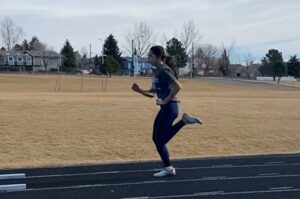
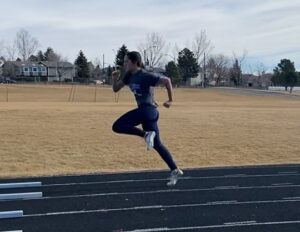


Lead leg
It’s important to view clearing a hurdle like an exaggerated running stride rather than jumping over the hurdle. You can learn about proper sprinting technique here. This means that the lead leg should cycle up under your body, having your heel come up from below your but, then raise your knee and then extend your leg. Once the heel gets to the hurdle, you should already start to lower your foot toward the ground. It does not have to fully extend.
Trail leg
The trail leg should pull through as soon as it finishes extending and propelling you toward the hurdle. The action of the trail leg should be such that the knee is high and the foot is low. I tell me athletes to have the bottom of their shoe look at the top of the hurdle. Then, the leg should continue the rotation so that when your lead leg is touching down, your trail leg is in front you with a high knee.

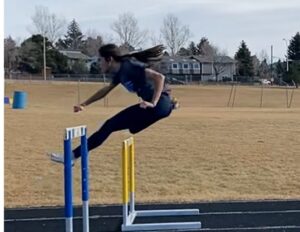


Lead Arm
Whichever leg you use for the lead leg, the opposite arm will be the lead arm. The lead arm should extend forward as you extend toward the hurdle. I prefer to teach my hurdlers to keep their arms at 90 degrees at all times. Once you reach full extension at the hurdle, your lead arm should start back as your trail leg starts through. The two actually pass each other along the way.
Trail Arm
The trail arm has the seemingly smallest roll in the action as it should simply swing back and forth in the same plane staying at 90 degrees. Its main role is to aggressively swing forward as you clear the hurdle to help you come back to an upright running position.
Getting Help With the 100 Meter Hurdles
Hurdling is not any easy event to learn on your own. There are so many technical aspects to it that are difficult to see on your own. It takes a trained eye to spot them. There are two ways two ways to get the coaching you will need:
- Find a coach in your area. You’ll likely have to look for a track club and ask if they have a hurdle coach. I suggest looking are a USATF or AAU track club. Hopefully here is one near you.
- Let me help you. There simply aren’t a lot of hurdle coaches out there. To meet the needs of athletes that need coaching help, I have created these products and services. Hopefully one of them will meet your needs.

Lily Acosta
300H, 400H USATF Junior Olympic State/Regional Champion.

Elijah Brown
110m Hurdles, 400m Hurdles, Sprints. USATF CO State Champion. Metropolitan State University sprinter/hurdler

Tiffany Kenney Burak
6 time CO state champion sprinter/hurdler/jumper Tulane University Pentathlon

Katelyn Sage
CO High School State finalist hurdler Colorado Christian University sprints/hurdles



